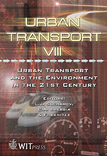The Use Of Mechanism Design In The Regulation Of Congestion
Price
Free (open access)
Transaction
Volume
60
Pages
10
Published
2002
Size
509 kb
Paper DOI
10.2495/UT020421
Copyright
WIT Press
Author(s)
O. Kveiborg
Abstract
Since Pigou [3] it has been known that tax levels equal to marginal external costs give the most efficient social outcome. However, to be able to use these results the social planner has to know the value of the congestion costs in order to determine the size of the Pigou tax. Newer economic theory suggests that it may not be necessary to calculate the value of the external costs. The theory concerns the implementation of socially desired outcomes (e.g. the most efficient level of transport in a road network). In relation to internalisation of externalities, and also in relation to congestion, the Compensation Mechanism implements the outcome reached using Pigou taxes in an economy with externalities – that is, the economic efficient outcome, The mechanism implements this result by having each individual announce the amount (of money) he will pay in compensation for the delay he causes, and the amount he should receive in order to compensate him for the delays generated by other commuters, The practical uses of mechanisms have been few, and no examples in transport settings have been seen. This paper demonstrates the important elements of the Compensation Mechanism and discusses some of the problems this new methodology rises.
Keywords





